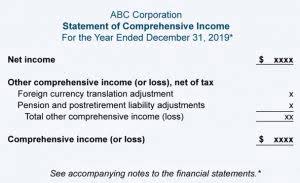Content

Dependable accounting software will be written/coded to enforce the rule of debits equal to credits. In other words, a transaction will be accepted and processed only if the amount of the debits is equal to the amount of the credits. In single-entry bookkeeping, you maintain a cash book in which you record your income and expenses.
- Inclusion of assets and liabilities in the bookkeeping accounts.
- There is no limit on the number of accounts that may be used in a transaction, but the minimum is two accounts.
- If you use accounting software, use it to generate a balance sheet as often as you need to make sure your books are balanced and your company is on track to succeed.
- Sole proprietors, freelancers and service-based businesses with very little assets, inventory or liabilities.
- These transactions are recorded in a company’s general ledger, in individual nominal codes.
- Under this system, every debit for a certain amount of money will have corresponding credit for an equal amount.
In reality, even a small business may identify a hundred or more such accounts for its accounting system, while a large company may use many thousands. Nevertheless, for bookkeeping and accounting purposes, all named accounts fall into one of the five categories above .
Daftar Isi
Assets = Liabilities + Owners Equity
This transaction involves two accounts – Cash Account and Capital Account – Angel. For this transaction, asset-cash increases for $20,000 on one side, and the other side, liability increases for $20,000 as capital, which is the claim of the owner. Once your ledger is complete, you can export the full set of records or just a filtered date range of records in a pre-defined accounting software format such as CSV, EBP, CogiLog, bookkeeping CEGID, SAGE etc. Accounting systems are designed to verify that each transaction balances out, so errors are flagged to accountants immediately, before they lead to a domino effect. A second benefit of the account structure is that it makes it easier to track back through entries to figure out where an error may have originated. Double-entry bookkeeping spread throughout Europe and became the foundation of modern accounting.

At the frequency of your choice, analyze all accounting records and use the wizard to track input errors. The entire API for recording financial transactions is available through a few methods in the DoubleEntry module.
Determining the financial position
When netted together, the cost of goods sold of $1,000 and the revenue of $1,500 result in a profit of $500. Unlike double entry accounting, a single entry accounting system — as suggested by the name — records all transactions in a single ledger. Accounting software usually produces several different types of financial and accounting reports in addition to the balance sheet, income statement, and statement of cash flows. A commonly used report, called the “trial balance,” lists every account in the general ledger that has any activity. The double entry system is more organized and helps assess the overall financial scenario of a company.
- The total amount of the transactions in each case must balance out, ensuring that all dollars are accounted for.
- Dolibarr has a dedicated and independent feature to setup your accountancy and dispatch all the data already recorded (products, sales, purchases, expense reports, salaries, …) into your ledger tables.
- Losses Account → The losses account is also non-core to a company’s core operations, yet depicts a negative impact, e.g. sale of an asset for a net loss, write-down, write-off.
- To prevent this from happening, you should complete a process called account reconciliation on a regular basis to keep your books accurate.
- Honestly, if you use bookkeeping software, that’s nearly all you need to know about double-entry accounting.
On the contrary, the latter is about making two entries simultaneously to two different accounts and marking both the debit and credit sides. Creating A Balance SheetA balance sheet is one of the financial statements of a company that presents the shareholders’ equity, liabilities, and assets of the company at a specific point in time.
Table of Contents
Double-entry bookkeeping’s financial statements tell small businesses how profitable they are and how financially strong different parts of their business are. You can see how you’ve spent money and how your business is doing. When all the accounts in a company’s books have been balanced, the result is a zero balance in each account. The accounting equation defines a company’s total assets as the sum of its liabilities and shareholders’ equity. The earliest extant accounting records that follow the modern double-entry system in Europe come from Amatino Manucci, a Florentine merchant at the end of the 13th century. Manucci was employed by the Farolfi firm and the firm’s ledger of 1299–1300 evidences full double-entry bookkeeping. Giovannino Farolfi & Company, a firm of Florentine merchants headquartered in Nîmes, acted as moneylenders to the Archbishop of Arles, their most important customer.

Every account in the chart holds a number to facilitate its identification in the ledger while reading the financial statements. The cash balance declines as a result of paying the commission, which also eliminates the liability. The reason your debit card is called a debit card is because the bank shows your balance as a liability because they owe your money to you—in essence, they are just holding it for you. Businesses that meet any of these criteria need the complete financial picture double-entry bookkeeping delivers.
Double-Entry Bookkeeping Examples
Single-entry bookkeeping is a simple and straightforward method of bookkeeping in which each transaction is recorded as a single-entry in a journal. This is a cash-based bookkeeping method that tracks incoming and outgoing cash in a journal. Bookkeeping and accounting are ways of measuring, recording, and communicating a firm’s financial information. A business transaction is an economic event that is recorded for accounting/bookkeeping purposes. In general terms, it is a business interaction between economic entities, such as customers and businesses or vendors and businesses. The double-entry system began to propagate for practice in Italian merchant cities during the 14th century.
- Bench gives you a dedicated bookkeeper supported by a team of knowledgeable small business experts.
- All popular accounting software applications today use double-entry accounting, and they make it easy for you to get started, allowing you to get your business up and running in an hour or less.
- You simply keep a running list of everything you spend and everything you earn.
- Zoho Books follows double entry bookkeeping as it is suitable for businesses of all sizes.
- Debit accounts are asset and expense accounts that usually have debit balances, i.e. the total debits usually exceed the total credits in each debit account.
Credits increase revenue, liabilities and equity accounts, whereas debits increase asset and expense accounts. Debits are recorded on the left side of the page and credits are recorded on the right. The sum of every debit and its corresponding credit should always be zero. This is a partial check that each and every transaction has been correctly recorded. The transaction is recorded as a “debit entry” in one account, and a “credit entry” in a second account. The debit entry will be recorded on the debit side (left-hand side) of a general ledger account, and the credit entry will be recorded on the credit side (right-hand side) of a general ledger account. If the total of the entries on the debit side of one account is greater than the total on the credit side of the same nominal account, that account is said to have a debit balance.
Bank and cash transactions
But what is the double-entry system, and how important is it for non-accountant small-business owners to learn? Accounting EntryAccounting Entry is a summary of all the business transactions in the accounting books, including the debit & credit entry. It has 3 major types, i.e., Transaction Entry, Adjusting Entry, & Closing Entry. Once your chart of accounts is set up and you have a basic understanding of debits and credits, you can start entering your transactions. Even with the above errors, the trial balance will remain in balance. The reason is that the total of the debit balances will still be equal to the total of the credit balances.
The same goes if you invest your own money into your startup business. At the same time, owner’s equity increases because now you’re a shareholder.